My friend was building a Stirling engine and when he found out that I owned a small lathe, he asked if I’d machine a piston and cylinder for him. Having some materials on hand like copper tubing for the cylinder and some solid aluminum rod for the piston, I agreed to make the parts. Another one of the parts he needed was a 7/16″ bolt with a hole drilled down the center of it. He had tried to make the hole with his drill press, but ran into a problem where the hole he drilled was not centered. This became apparent only after the hole was finished, of course, as it exited the far end of the bolt off center.
I had an idea about a procedure for drilling an accurate center hole in a cylindrical part with a drill press by first aligning a drill vice to hold a drill bit stationary while using the drill chuck to grip and spin the work piece. My drill’s chuck can hold a drill up to 1/2″ in diameter, which would be more than sufficient to grip a 7/16 bolt on its shank. I thought I’d run a quick experiment and document the procedure for anyone else who may want to try using a drill as a lathe for making a center hole in a cylindrical part.
A lathe is most often used to turn a part using a cutter that can either remove material from the diameter or from the part’s face. But it also has a very nice feature when a drill chuck is inserted in the tailstock, and that is to accurately drill a hole precisely down the center of the part. An example of that is shown below.
Normally, you would use something called a center drill to start the hole and then swap it out for the drill of the proper diameter. If the hole is large, you may have to drill with several drill sizes to get it up to the finished diameter. In this case, the hole I wanted to make was just .125″ in diameter so it was possible to do with just a single drill in one step. The procedure I describe below would need to be modified by resetting the alignment for each drill if you need to open the hole up in several steps.
If you didn’t own a lathe but had a drill press and a drill vice, here is a procedure for drilling a center hole in a cylindrical part.
First, you put a drill of the desired diameter in the drill chuck and tighten it. Then gently raise the drill table, clamp the table to set its height, and then and move the drill vise to the bit and clamp the drill vice down on the bit. The drill vice must have a ‘V’ groove one its jaws to align it vertically on the drill bit. This is important for a subsequent step. After everything is aligned, then use a pair of ‘C’ clamps to hold the drill vice to the table so it cannot slide from side-to-side. Then un-clamp the drill bit from the chuck and the drill vice and turn the bit upside down and clamp it in the vice’s V-groove again so that its tip is facing upward. Then clamp the workpiece in the drill chuck. In this case, I’m using a .5″ diameter section of aluminum rod as the workpiece.
Here the drill is clamped in the vice pointing upward and the workpiece is just partly visible and clamped into the drill’s chuck.
Then turn the drill on. Just like on the lathe, the drill bit will be stationary and you can lower the spindle with workpiece and it will drill the hole accurately through the center of the part. Remember to lift up on the spindle periodically to clear out the metal chips. If you got everything aligned correctly, the drill will make the hole directly in the part’s center. In my case, the hole was within .002″ of being concentric with the outside diameter of the part on both ends of the part. That’s about as accurate as you would get with a lathe so the technique works well.
It may not be apparent but the part is spinning, the drill bit is stationary.
Here’s the finished part with the hole perfectly centered.


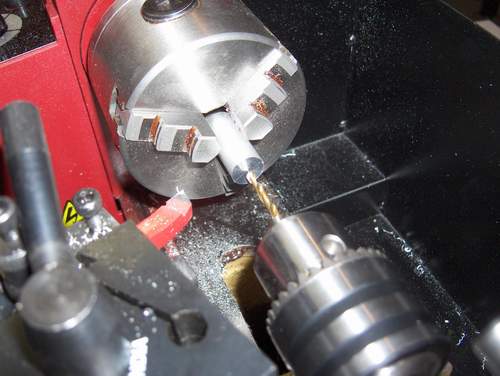
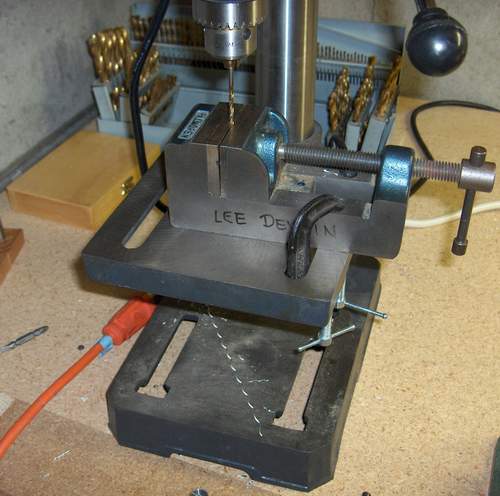
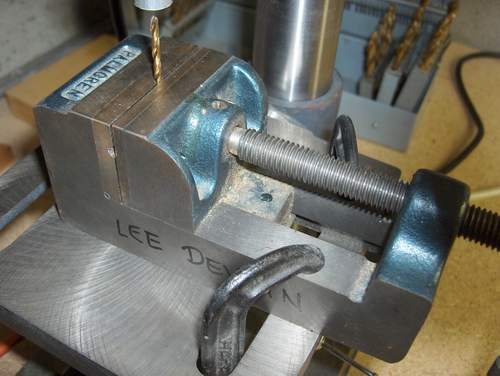
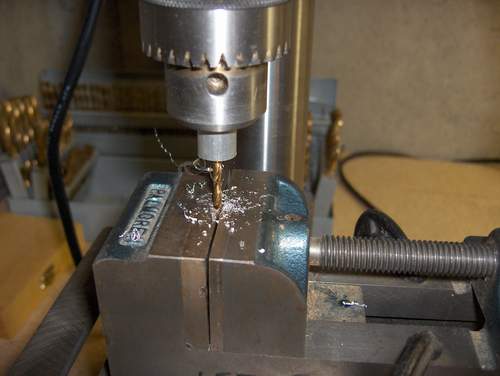
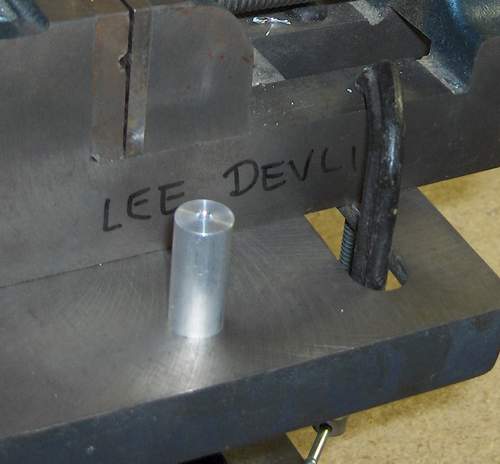
Hi Lee. Great post. Is there anyway I could do this without the clamp or vice? I am wondering how this technique can be used across a workshop. Thanks
Hi Lee, not sure if my last comment was recorded. I was wondering if there is any way to do this without using a clamp or vice. Haven’t had much success. This would help me streamline our productivity across the workshop. Thanks
David Hughes recently posted…How do CNC grinders grind tapers?
Hi David, I moderate comments so it can take a day or so to post to this blog. A lot of bots just make generic comments to get inbound links to their website and I generally delete those. As for your question, I think you can make some wooden v-blocks and then use screws to apply pressure to the v-blocks and hold them in place with an adhesive like hot glue or even duct tape. It depends on what you’re doing, I guess. If its a repetitive operation with the same diameter parts, it sometimes pays to make a jig to make it faster for someone than having to do all that tweaking to find the center.